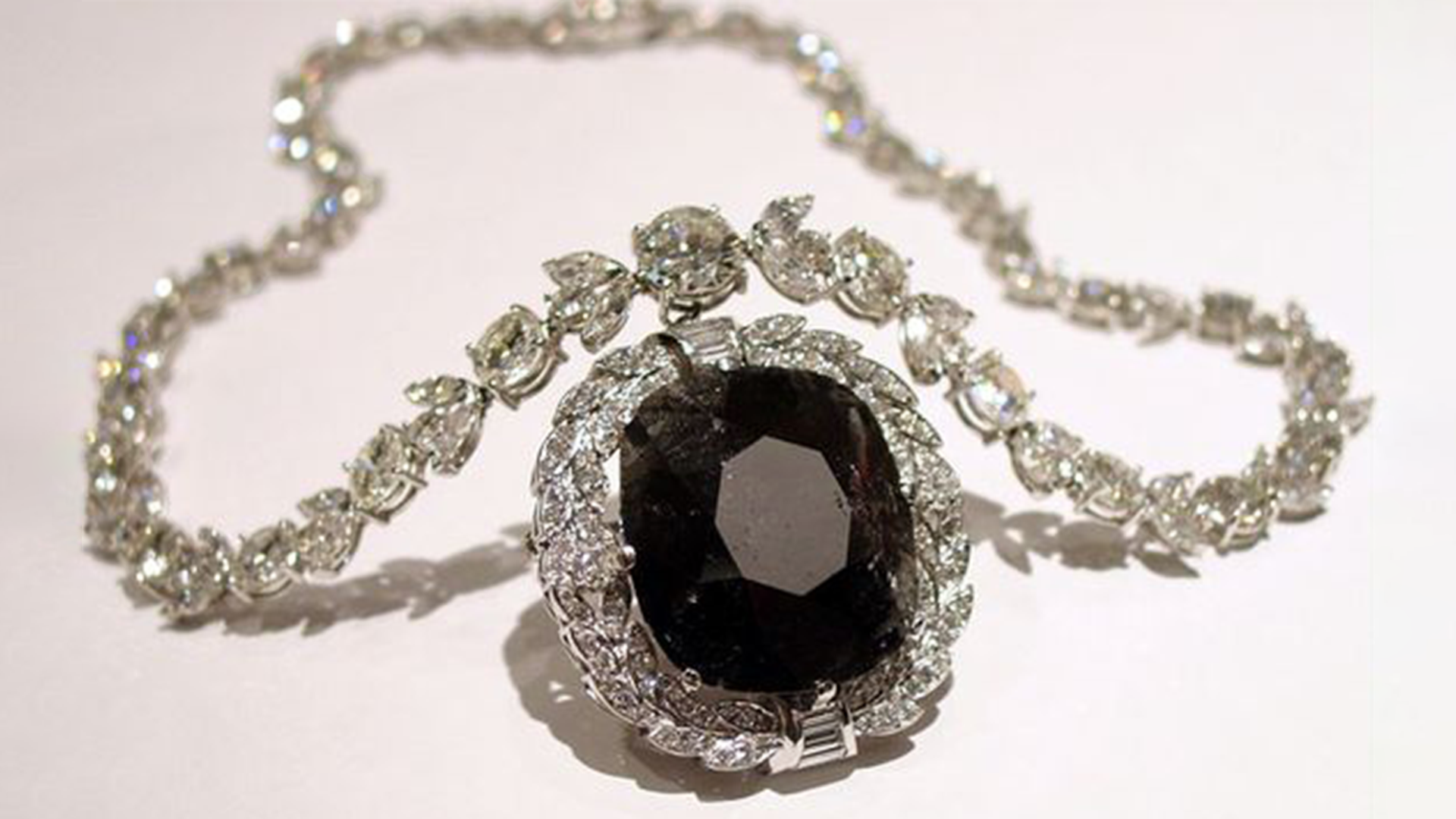Diamonds that are famous enough to be named often come with fascinating back stories. One of those diamonds in the Black Orlov, the seventh largest black diamond in the world, which was supposedly cursed. The story behind this dark stone is shadowy and much of it seems to be unverified, nonetheless, the legends stick.
Black Orlov Origins
Allegedly, the 195-carat black diamond was set in the eye of the Hindu God Brahma (God of Creation) in Pondicherry, India, which is why the gem is also known as the Eye of Brahma. The theft was said to have happened in the early 1800s. It was the event that launched the stories of the gem’s curse that was activated when the diamond was supposedly stolen. The story goes two ways: One says that a Hindu monk stole the diamond from the statue and was later murdered. A second version states that a Jesuit cleric stole the diamond; there does not seem to be any record of his fate. Modern gemologists are doubtful of this origin story because black diamonds are not native to India, they are more likely to come from Brazil or Africa. However, there is no paper trail as to where the gem was first encountered and it could have been imported.
Black Orlov Goes to Russia
Somehow, but no one is quite sure how, the black diamond turned up in Russia where it was purchased, or acquired in some way, by Princess Nadia Vyegin Orlov. Here’s where it gets tricky, there was no princess by that name in Russia. There was however, a Princess Nadezhda Petrovna Orlov who fled from Russia to France during the Bolshevik Revolution. Did she perhaps change her name when she left the country? No one knows. It is thought that the diamond got its moniker from the princess.
Black Orlov Comes to New York City
European diamond dealer J.W. Paris gained possession of the gem and brought it to New York City to sell in 1932. He got lucky, or did he? The diamond sold shortly after Paris arrived in the U.S., but he supposedly jumped from the window of a high rise on Fifth Avenue a few days later. Allegedly, he left two letters, one to his wife and the other to a jeweler, but no one knows what the letters said. There is however, no record of a jumper from that time, although Paris was thought to have had some financial problems.
Two Russian Princesses
Two of the previous owners of the Black Orlov also are reported to have jumped to their deaths, but did they really? One was Princess Leonila Galitsine-Baratinsky, who allegedly jumped out of the window of a building in Rome in 1947. The issue with this tidbit of information was that a woman living in Europe by that name, had died in 1918. An early case of identity theft perhaps? There is a record of a Princess Leonila who was married to the Royal Navy Officer Prince Andre Glinstine, but was she the one who owned the stone? It was also reported that Princess Nadezhda Petrovna Orlov jumped from a window in a building in Rome that same year, but it was unsubstantiated.
Black Orlov Gets Recut
During the 1950s an intrepid diamond dealer Charles Winson bought the gem. In an effort to break the curse, he had the 195-carat gem recut. The stone was cut in three pieces, two have seemingly vanished, or were perhaps lost in the cutting process. The remining 65-carat stone is what we now know as the Black Orlov. The thread of where the diamond’s whereabouts are murky for the next couple of decades but we do know that the Kaznjian’s, a family of dealers based in Los Angeles owned the rock during the 1960s. It disappeared again before resurfacing, in the early aughts. This time it was owned by Johnstown, Pennsylvania jeweler Dennis Petimezas, who consigned the Black Orlov to be sold at Christie’s. It sold at Christie’s on October 11, 2006 for $352,000. So far, no news reports of the Black Orlov creating havoc.
Top of page: Black Orlov Diamond
Authored by Amber Michelle
